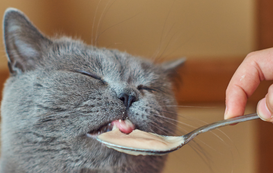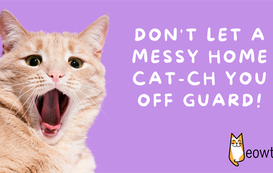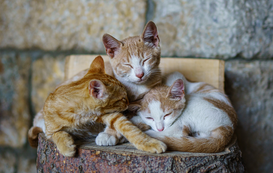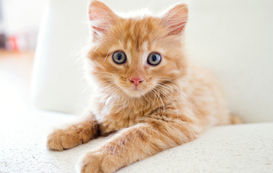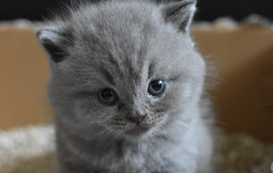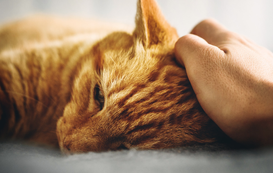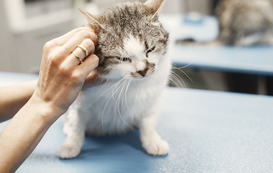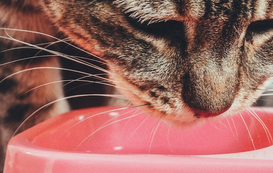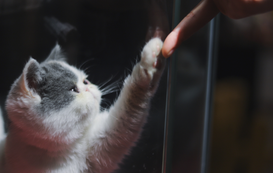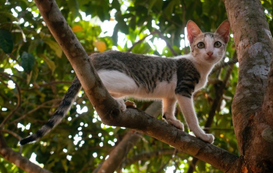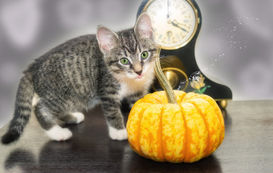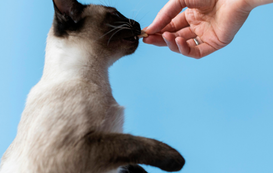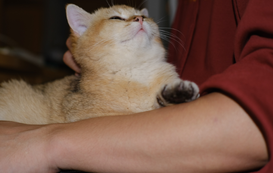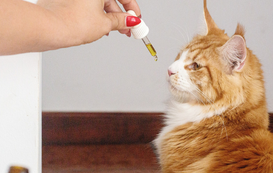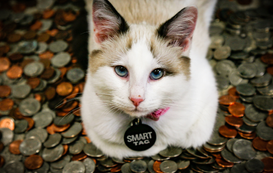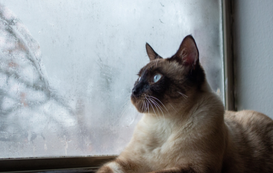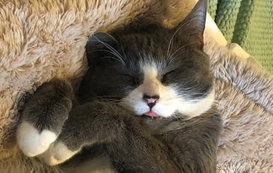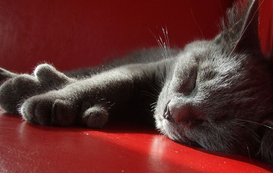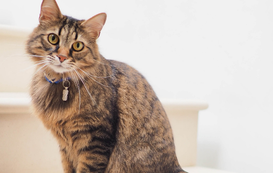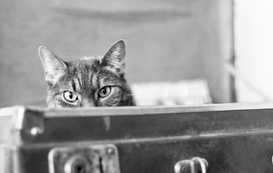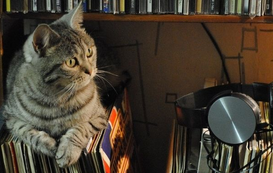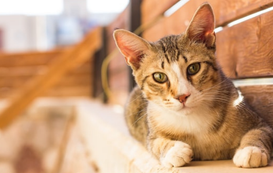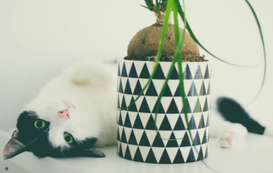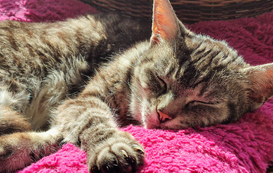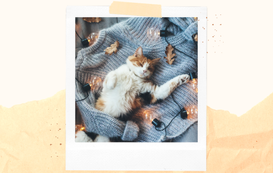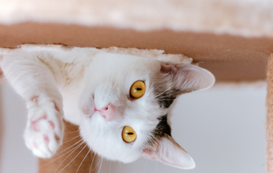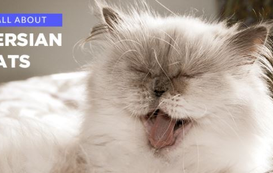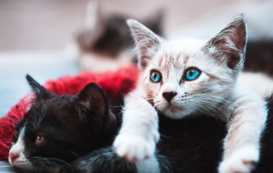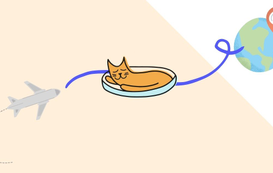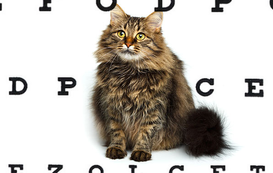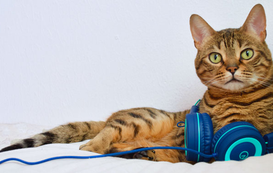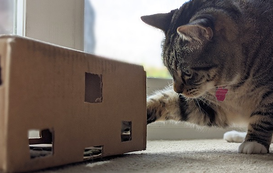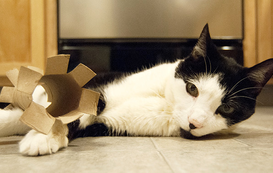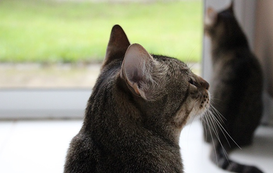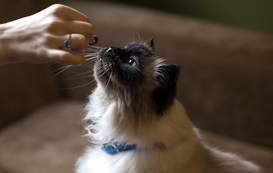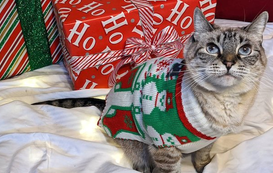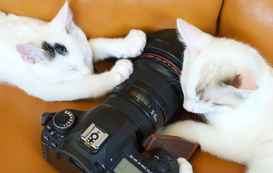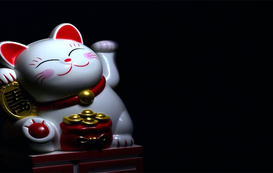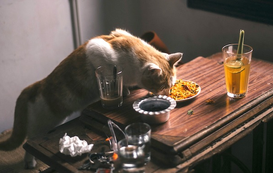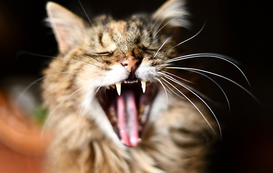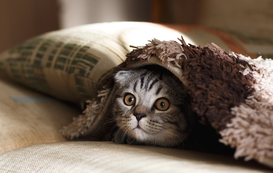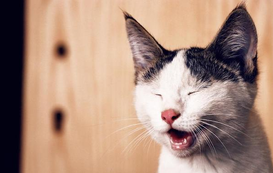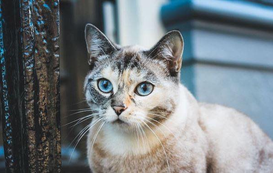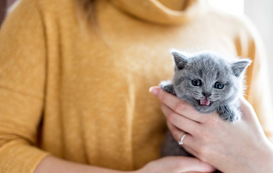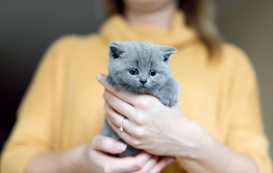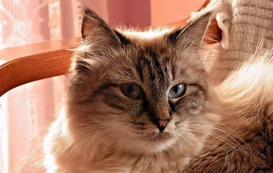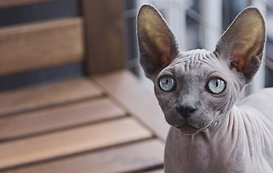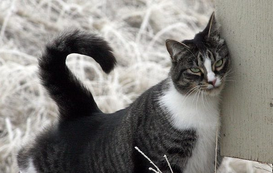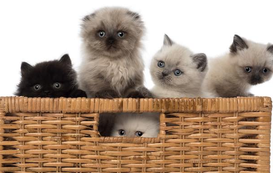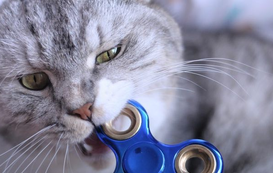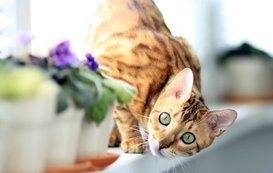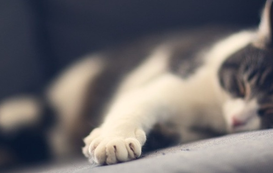- Home
- Cat Sitter Blog
- Cat Behavior
- Whiskers and Toe Beans and Noses (Oh My!)
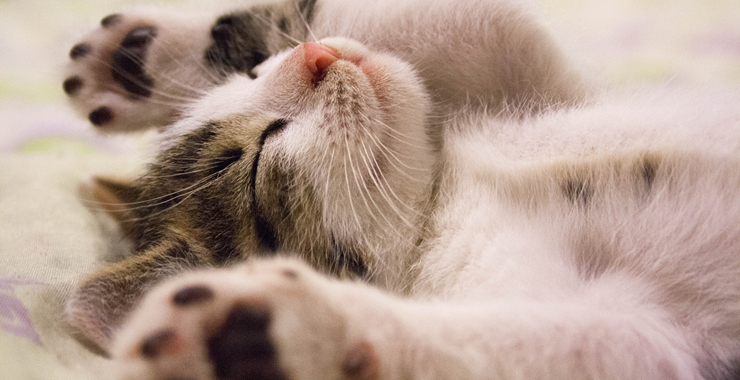

Whiskers and Toe Beans and Noses (Oh My!)
As you likely already know, every cat is purrfect in their own way. Let’s take a look at what makes our feline friends so special and unique!
Whiskers
Long or short, kitty whiskers are an important part of what makes a cat a cat. Cats typically have 24 whiskers on their face, and these thick hairs help cats navigate the world around them. Whiskers are sensitive to touch and vibration, and they transmit important sensory information about nearby objects and movements.
The length of a cat’s whiskers can vary by breed and with age. Even if they seem exceptionally long, you should never trim or pull your cat’s whiskers. Doing so decreases their spatial awareness and confidence in moving around their environment; this can make them feel anxious and disoriented. In fact, it’s best to keep your hands off of the whisker area entirely in order to avoid sensory overload or irritation.
Toe Beans
Technically called “digital pads,” toe beans serve many purposes for your cat. These adorable pads absorb shock, provide grip, aid in balance, and transmit sensory inputs. Shock absorption is particularly important when you have a kitty who loves to jump up and down from high surfaces like cabinets or cat trees.
Due to the abundance of nerve endings present, your cat may not be keen on letting you handle their paws. However, they can certainly be admired from a distance! Whether black, pink, orange, or anything in-between, the color and shape of your kitty’s toe beans add to their purrfect individualism. The color of a cat’s toe beans generally correlates with the color of their fur, and it is important to check with a veterinarian if you notice color changes over time as this may signal health issues.
Noses
Did you know that every cat has a unique “nose print”? Just like human fingerprints, no two noses are alike! All of those little bumps and ridges are truly one of a kind.
In addition to being totally distinct, kitty noses are also incredibly powerful. Cats have over 200 million odor sensors in their noses (in comparison to humans’ 5 million!), and their sense of smell is 14 times stronger than our own. This superpower smelling ability helps cats locate and capture their prey in the wild. However, for our domesticated friends, this incredible sense of smell means that it is important to consider your kitty’s feelings when introducing scented candles, creams, flowers, and even cooking spices. We recommend conducting a quick Internet search before introducing any new smells, and consider removing scented objects that appear to irritate your cat.
Tongues
For anyone accustomed to licks from other types of animals, receiving a lick from a cat’s scratchy tongue can be a strange experience. Why are their tongues spiky? What purposes does this serve for their survival?
The little spikes on a cat’s tongue are called papillae. Each papillae has a tough keratin coating to give them their strength and rigidity. These barbs help cats with a variety of tasks including hunting, grooming, and drinking. When a cat catches prey in the wild, the papillae help them part flesh from bone to ensure that they are able to consume all of the meat. At home, these backward-oriented papillae help guide your cat’s food and water to the back of their mouth. Papillae also help cats get all of the dirt and debris off of their fur for maximum cleanliness.
In summary
From their noses to their toes, every cat is special! Their unique features are finely attuned to help them thrive in their environment.
If you’re in need of an in-home cat sitter to provide customized care for your kitty’s needs, Meowtel has you covered. Find your purrfect sitter now.


